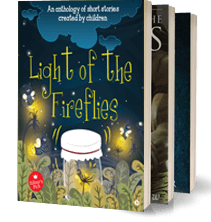
- Discover books
- For Writers
-
For Writers
-
Indie Author Championship
-
Challenges
Writing Contests
- Get Started

"It was a wonderful experience interacting with you and appreciate the way you have planned and executed the whole publication process within the agreed timelines.”
Subrat SaurabhAuthor of Kuch Woh Pal -
Crop your profile image

Edible Wild Plants of West Bengal, India
Books by Dr. Pradyut Biswas
Large number of wild plants are being consumed by the local peoples of India. Most of these plants are collected by the elder people from the wild sources, who spend a considerable part of their day in the field collecting plants from the local habitat. Majority of the plant parts are being sold in different markets. These plants have social importance to the daily livelihood pattern of the people for their ever growing marketing demand as well as economic ben
Large number of wild plants are being consumed by the local peoples of India. Most of these plants are collected by the elder people from the wild sources, who spend a considerable part of their day in the field collecting plants from the local habitat. Majority of the plant parts are being sold in different markets. These plants have social importance to the daily livelihood pattern of the people for their ever growing marketing demand as well as economic benefit. On the other hand, over exploitation of these plants may cause threat in the wild. Many of these plants are less common in this area i.e. infrequent and belonging to Least Concern category in the IUCN list of Threatened Species (Version 2011.1) An effort has been made to brought out this publication entitled “Edible wild plants of West Bengal, India -A Pictorial Guide” to help in identification the edible wild plants easily with the illustration of coloured picture along with taxonomical description. In this present book 105 plant species have been illustrated with their high resolute colour photographs to identify them in easy way. Hope this publication would be of great help to scientist, researchers, officials, academicians and students
Antibacterial activity of some wild plants of West Bengal
Books by Dr. Pradyut Biswas
In vitro screenings of wild medicinal plants are quite important for their antibacterial properties against some clinically isolated pathogens as an alternative source of antimicrobial agents. Thus their antibacterial activity may opens the possibility of finding new clinically effective antibacterial substances as a drug, as an alternative way of use of natural products instead of antibiotics and therefore, decreasing the drug resistance. In many situa
In vitro screenings of wild medicinal plants are quite important for their antibacterial properties against some clinically isolated pathogens as an alternative source of antimicrobial agents. Thus their antibacterial activity may opens the possibility of finding new clinically effective antibacterial substances as a drug, as an alternative way of use of natural products instead of antibiotics and therefore, decreasing the drug resistance. In many situations, use of antibiotics was banned. In such cases, use of medicinal plants with potent antimicrobial property could be an alternative source of medicine.

Are you sure you want to close this?
You might lose all unsaved changes.
Select from one of our global stores to continue
 India
India
 Malaysia
Malaysia
 Singapore
Singapore
 UAE
UAE
Warning Message
The items in your Cart will be deleted, click ok to proceed.










